Samsung Galaxy S 6 and S 6 Edge: Preview
by Joshua Ho on March 26, 2015 9:00 AM EST- Posted in
- Smartphones
- Samsung
- Mobile
- Galaxy S6
- Galaxy S6 Edge
GPU Performance
As previously discussed, on the GPU Samsung has added two additional shader cores to the Mali T760 for additional performance in addition to a clock speed bump from 700 to 772 MHz maximum. To evaluate the effects of this we look at GFXBench which is generally accepted as a pure GPU benchmark.

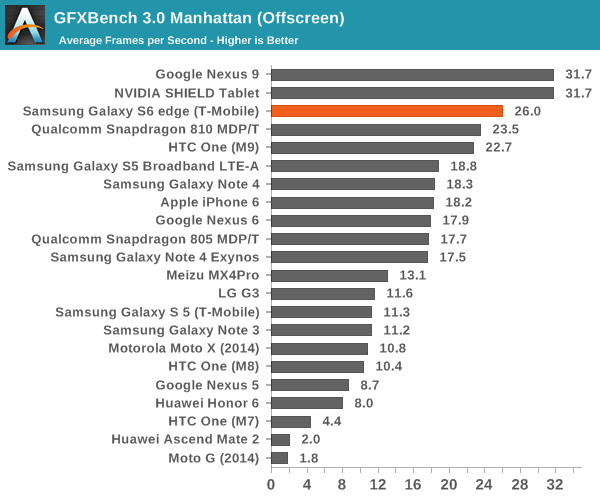
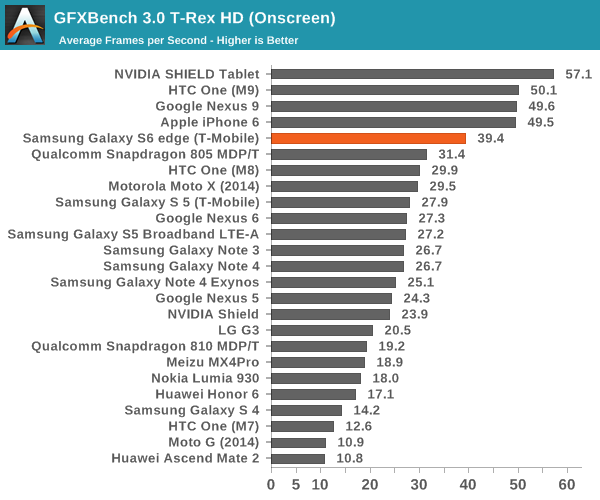
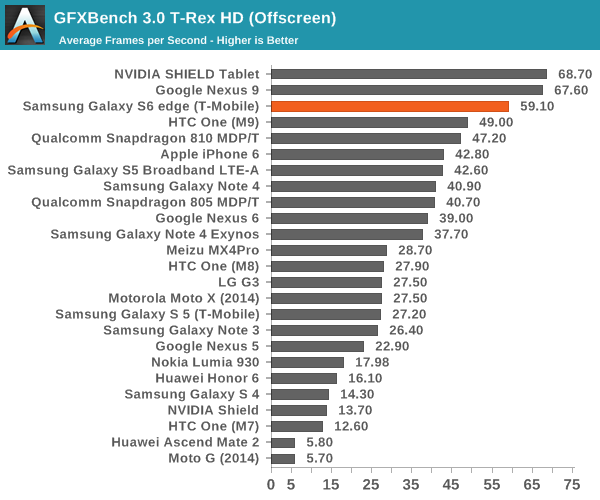
From the results the Mali T760MP8 GPU of the Exynos 7420 performs admirably in comparison to the Adreno 430 of the Snapdragon 810. We see a 10% lead over the Adreno 430 in Manhattan, growing to 20% in T-Rex. Qualcomm hinted that the Adreno 430 is more strongly improved in ALU performance over the Adreno 420, which would explain why the gap isn't as significant this generation. A 700 MHz clock on the Adreno 430 would likely equal to T760 in this case, but I suspect the power consumption of such a clock would be untenable. The Galaxy S6 does fall behind on the on-screen benchmarks due to the 1440p display compared to the 1080p display of the One M9, but rendering at a lower resolution would avoid most of these problems in real games.
Display
As previously discussed, the Galaxy S6 line introduces a newer generation of AMOLED displays, which is said to increase maximum luminance to 600 nits. Samsung claims that this was achieved with the use of new materials, which is likely necessary in order to sustain power efficiency improvements. It doesn't seem that AMOLED is uniquely suited to high resolution, but rather that Samsung Display Corp. is managing to dramatically improve how they make AMOLED displays with every year that offset power consumption increases from higher resolution displays. To find out how Samsung did, we use SpectraCal's CalMAN 5 Ultimate, in addition to X-Rite's i1Pro2 Basic to characterize displays as accurately as possible.
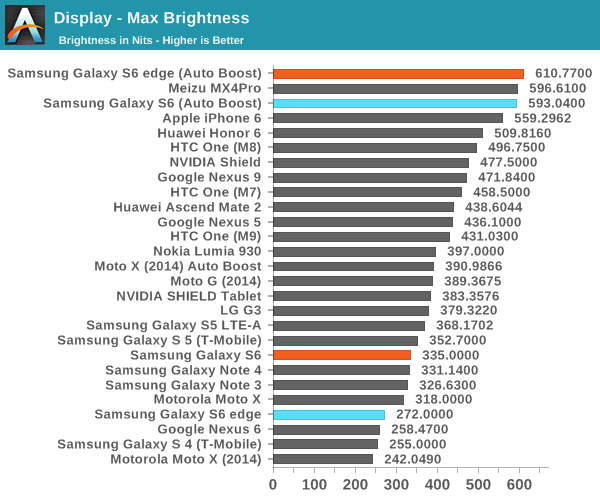
From the results Samsung's claims of a 600 nit display are valid in this case, which is a 100% APL white display. It's important to note that achieving this requires the use of auto-brightness, and that manual brightness is limited to a much lower brightness to reduce power usage, here the S6 sees similar maximum brightness as the S5. The S6 edge disappointingly only achieves 272 nits in this mode, a rather low value. I saw color balance shift dramatically in auto-boost mode, which suggests that this operating mode is likely less efficient than manual brightness. As an explanation, we've seen that colors are controlled in AMOLED by voltage while brightness is controlled by PWM (pulse width modulation). As with most recent AMOLED displays, there's no DC bias to the pixels so the contrast really is infinite instead of just a very large number when displaying black.
Galaxy S6
Galaxy S6 edge
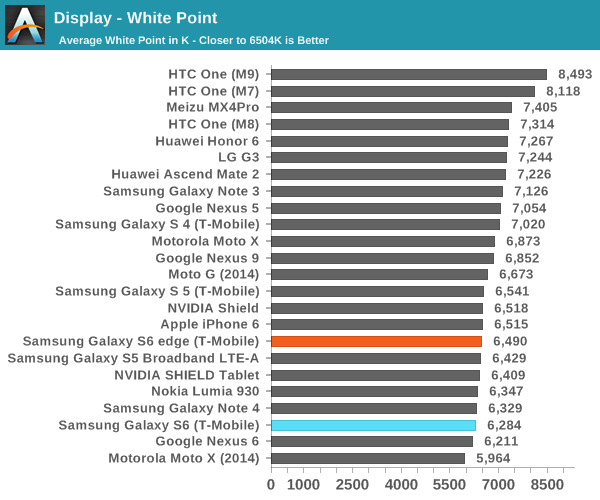
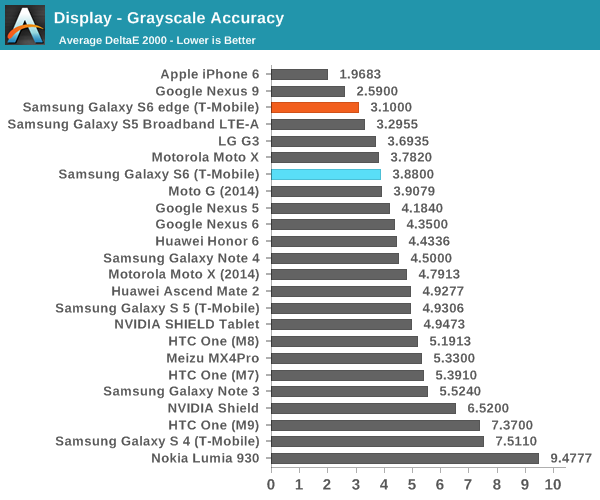
Moving on to grayscale, we can see that Samsung has done a pretty good job of controlling the white point and gamma across the saturation sweep, even if green is slightly dominant in both displays. We can also see that there is variation across displays as the S6 edge is closer to neutral while the S6 sample tends a bit warmer.
Galaxy S6
Galaxy S6 Edge
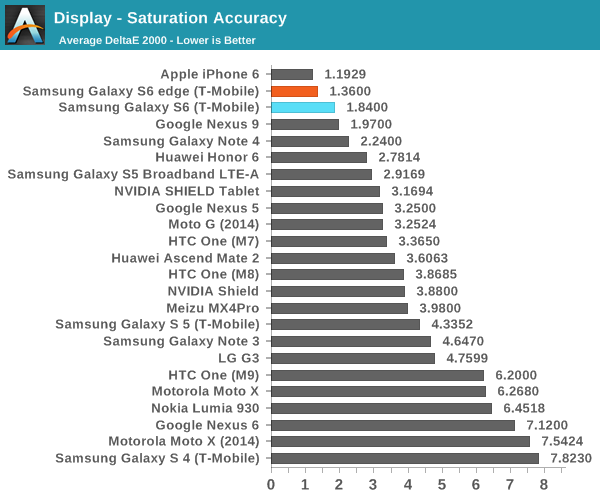
In the saturation sweep, both displays do an incredible job. I really don't have anything else to say here, because there's really no way to improve on the level of calibration Samsung has done on this display. Unless Samsung calibrates every single display in production, which is wildly impractical and effectively impossible to do, this is as good as it gets for a mass-produced device. Improving past this point will also be incredibly difficult to perceive, which means there's no real reason to go any further.
Galaxy S6
Galaxy S6 edge
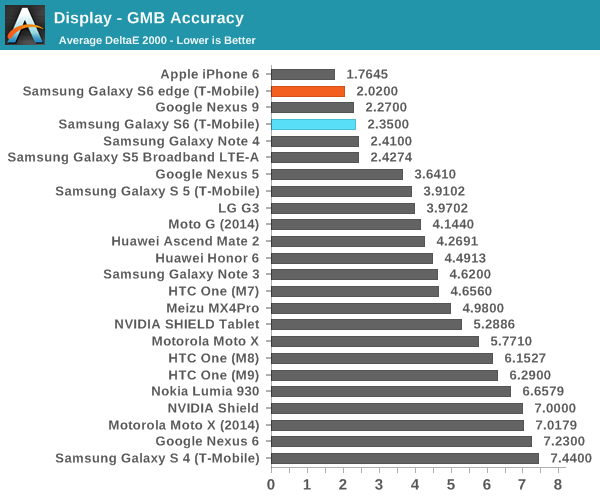
In the Gretag MacBeth ColorChecker, we can get an idea for overall color accuracy, which paints a picture similar to the saturation test. The only real problem I've noticed with these displays are the viewing angles, which can produce color shifting when the display is tilted. This is a bit of an issue on the edge variant as I can see that the edges of the display appear somewhat green when viewed head on, but otherwise there are no real issues to be seen here. Overall, this is probably the best display anyone will be able to get in a smartphone right now. This level of progress is amazing from Samsung, given just how bad things were with the Galaxy S' AMOLED display, even as recent as the display of the Galaxy S4. With the Galaxy S5 review, I said that I wouldn't be surprised to see AMOLED equal, if not exceed LCD within a year or two, and Samsung has managed to finally hit that mark.



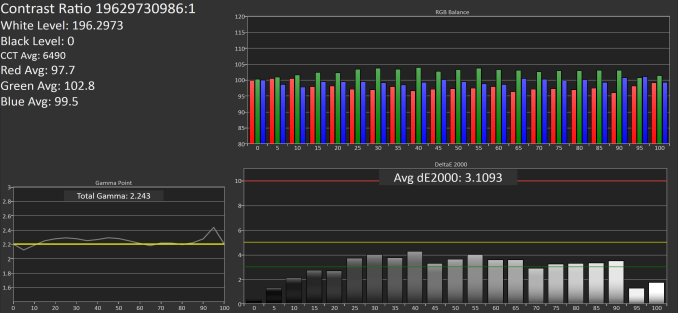
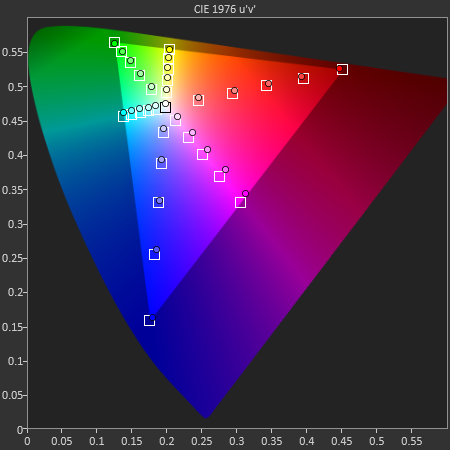
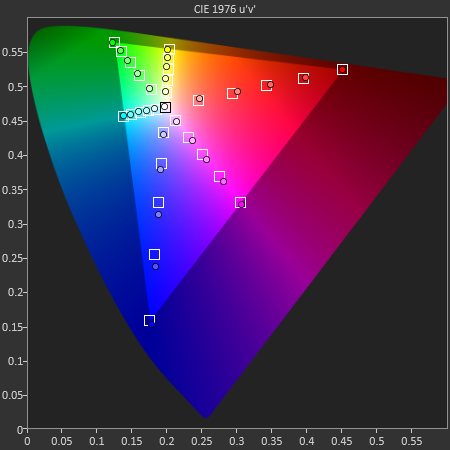
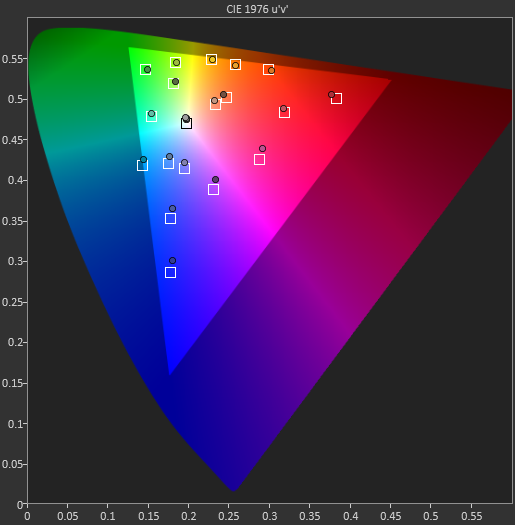









200 Comments
View All Comments
Zizy - Thursday, March 26, 2015 - link
Samsung used to have all that, that's the point :)Similar to Windows RT and ChromeOS for example. Similar stuff, but RT is hated for being limited, while ChromeOS is praised for that.
NEDM64 - Thursday, March 26, 2015 - link
So if the iPhone doesn't have, then it's not needed?That's not how to make a superior product.
Chaser - Thursday, March 26, 2015 - link
The first large sized smartphone was invented a few months ago.hrrmph - Friday, March 27, 2015 - link
Exactly correct.As I have tried to get folks to understand repeatedly: the iPhone always was an upper-middle level offering, never a premium high-end flagship phone.
Samsung made the premium high-end hardware. They provided many of the extra features that Apple refused to support...
... and now Samsung is effectively abandoning the premium high-end flagship market by downgrading their offering to the S6. The S6 is, just like the iPhone, an upper-middle market machine.
So who will inherit Samsung's former position at the top of the premium high-end flagship market? HTC, Huawei, LG, Motorola, Sony? Somebody else?
steven75 - Friday, March 27, 2015 - link
The reason you've "tried to get folks to understand repeatedly" is because no one else believes that nonsense.Lonyo - Thursday, March 26, 2015 - link
Well, for me, I could buy a Galaxy S6 to replace my S3, except I got a 128GB MicroSD card for my S3, so why would I want to have to buy the most expensive S6 in order to get less storage (as the S3 also has built in storage), when I could get a competitor's phone which has a MicroSD slot? Samsung removed an upgrade path for me to their newest phone by removing the MicroSD slot. The result? I ordered a different phone to upgrade to (although I've gone the whole hog with a Lumia 640 to try Windows Phone).Existing Galaxy users may have MicroSD cards like I do, and they would then be rendered mostly useless. iPhone users don't have MicroSD cards, so it makes zero difference to them.
makxon - Friday, March 27, 2015 - link
Right dude you can get a midrange phone with micro SD i'm sure its enough of big upgrade from your S3, now "premium" flagship is not all about bang per buck okay, flagship and "premium" phone is arguably only for show. and i'm sure rich people who buy it is not that stingy to decide their next phone just because they already have 128GB microSD ready to use, lolhrrmph - Friday, March 27, 2015 - link
Premium high-end flagships aren't just for show. Samsung was winning because their hardware did more, even though it was wrapped in plastic. I never had a problem with plastic - the best that I've seen is the Blackberry Z10, but Samsung's was never terrible.What Samsung didn't do here was maintain their superiority. If they had put 128GB storage on the inside, and a Micro-SD slot, then then the phone would hold 328GB of storage (SanDisk now has a 200GB Micro-SD chip to fit in the slot).
Today's Micro-SD slots meet the SDXC standard which means that just like hard drives, they are upgradeable to larger sizes as soon as newer chips are made. SDXC supports up to 2TB, even though 200GB is currently the largest.
For folks who need local storage, Samsung was usually double or more the capacity of the iPhone. For example, Apple can't touch 328GB of storage. But, Samsung let the premium high-end flagship market down by not letting us have 328GB of storage.
steven75 - Friday, March 27, 2015 - link
Samsungs sales took a dive and they panicked. Have you not been paying attention?danbob999 - Thursday, March 26, 2015 - link
"This level of progress is amazing from Samsung, given just how bad things were with the Galaxy S' AMOLED display"Am I the only one to find it ironic that the Galaxy S display was considered one of the best by this web site?
"I’d say Samsung’s Super AMOLED is in the running for best display on a smartphone up there with the iPhone 4’s Retina Display. Apple has the resolution advantage, but Samsung has a huge contrast advantage. The former is nicer for reading text, while the latter is better for just about everything else."
http://www.anandtech.com/show/3891/samsung-epic-4g...